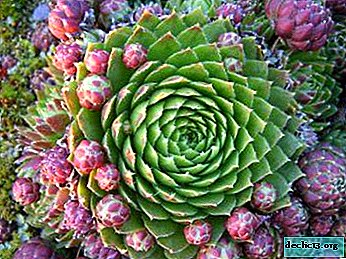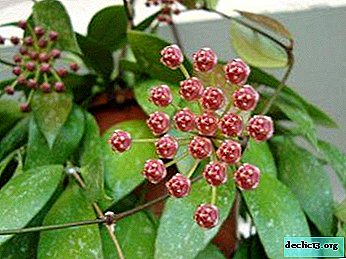Is it possible to save an orchid without roots and leaves and how to do it?

Orchids have long gained popularity, and for a long time delight the eye with their beautiful flowering. But what if the favorite flower has lost its roots? Of course, this is an unpleasant moment, but do not despair.
Using the correct, and most importantly fast action algorithm, you can save your pet from death. We will tell you exactly how to reanimate a flower without roots, and also what to do if its leaves become sluggish or even all fall off.
The importance of these parts for the plant
According to the structure and appearance of the leaves of orchids, it can be argued that these plants are perfectly adapted to environmental conditions.
Orchids growing in arid regions have a dense and fleshy leaf. Plants that live in the scorching sun have thickened leaves.Orchids that love shade have a thin and folded leaf. The color of the leaves of this flower is mostly green, variegated shades can rarely be found.
Due to the leaves, photosynthesis, respiration and evaporation of moisture are carried out. Orchid roots are also endowed with many functions.:
 photosynthesis;
photosynthesis;- attachment to the substrate;
- accumulation and absorption of moisture and nutrients.
The roots of the plant are covered with a special tissue - velamen, which consists of dead cells. Such a tissue is filled with air, and like a sponge, it can both absorb and accumulate moisture. Velamen provides protection to the roots from mechanical stress and drying. The drier the conditions for the flower, the thicker the velamen layer on the roots.
It often happens that the leaves and roots of a plant dry or rot. This affects not only the appearance of the orchid, but also affects its further growth and flowering. So that such problems do not lead to death, urgent measures must be taken.
Reasons for their loss
The main task is to find out why the loss of roots occurred. Orchid is a tropical plant, and conditions such as:
- Insufficient lighting. For the formation of new cells, as is known, photosynthesis must take place, which is impossible without good lighting.With a lack of light, the plant "falls asleep", water is not consumed, which accumulates in the porous root tissue, due to regular watering.
- Cold. Reduced temperature in conditions of sufficient lighting does not harm the orchid, on the contrary, it improves the flowering process. But in the case when the plant does not absorb the incoming moisture, the cold is a danger. At low temperatures, the evaporation of excess moisture from the substrate is inhibited, the development of fungi and bacteria is activated, and the root system begins to rot.
- High humidity. The upper root layer of the orchid, like a sponge, continuously absorbs moisture, even if the stem and leaves do not need it. Due to stagnation of moisture in the substrate, pathogens multiply.
- Fertilizer abuse. The roots of this flower are very tender and sensitive to an excessive amount of macrocells, especially with regard to phosphorus and potassium. An increased dose or a high concentration of fertilizers can cause a burn. After that, drying and dying of the roots occurs.
- Fungal diseases. In conditions of constant dampness, the plant is exposed to fungal diseases. With the rapid propagation of the fungus, living orchid tissue dies.
One of the reasons for the loss of leaves may be a defeat by a disease such as fusariosis (to learn more about diseases of the green cover of orchids, as well as to see a photo of the affected leaves here). This fungus has a high degree of distribution, and you need to save an orchid quickly. The disease occurs due to salinization of the substrate and lowering the temperature. The appearance of fusarium after constant and excessive watering is not excluded. Once in the plant’s tissue, the fungus clogs its vessels, and the leaves die off before they even blacken (see why the leaves and roots of orchids turn black and how to help the plant, read here).
External signs of orchid disease:
 Loss of turgor leaves. Even after watering, leaf elasticity is not restored.
Loss of turgor leaves. Even after watering, leaf elasticity is not restored.- Darkening or drying of the roots of the plant (about why the orchid dries and what to do to save it, read here).
- Not the stability of the aerial part of the flower.
- The walls of the orchid pot are covered with green algae.
Each of these signs is a good reason for a careful study of the plant, in order to prevent its death.
Step-by-step instructions on how to reanimate a flower at home
No roots and foliage
Is it possible to save an orchid that has lost both roots and leaves? Yes, if you proceed as follows.
- Inspection. Remove the substrate and carefully inspect the plant. Dry and rotten roots, as well as dried leaves, must be removed with a sanitized knife or scissors.
- Disinfection. Rinse the remaining rhizomes with a light solution of manganese, dry. To prevent infection from entering, sprinkle all sections with crushed activated carbon.
- Root cultivation. New roots grow, alternating soaking the plant’s neck in water, then nutrient solutions and drying it (how to grow orchid roots with root and other means can be found here).
- Landing. After the emergence of overgrown roots and leaves, plant the orchid in a small pot with a new substrate. Select a substrate with a large fraction of the bark. Moisture must be obtained by surface spraying of the soil or by irrigation through a pallet.
In the case when there are only leaves
 After removing dried and rotten roots, lower the lower part of the plant into a growth stimulant diluted in water.
After removing dried and rotten roots, lower the lower part of the plant into a growth stimulant diluted in water.- In a container of boiled water, throw a tablet of activated carbon. And alternately move the flower from the first container to the second.
- Wipe the leaves periodically with a sponge dipped in sugar.
- The water in the container for the orchid periodically needs to be added so that it is on the same level.
- Two months later, you will see how new roots have grown. When the roots reach a length of 6 cm, transplant the orchid into the substrate.
With resuscitation with an orchid Observe a room temperature of 23 to 25 degrees, with constant air circulation.
In detail about how to conduct resuscitation of an orchid without roots at home, we talked about in this article.
If only the root system is preserved
- Remove the affected areas of the plant by capturing a small portion of healthy tissue. Healthy tissues are green.
- Treat the orchid with a fungicide solution.
- Transplant the flower into a new substrate.
When does resuscitation no longer make sense?
If the flower is weakly held in a flowerpot and can be easily swayed in different directions - hurry to remove it from the pot to determine the state of the roots. If you find mucus, soft and full water or mucus of the root - be sure this is rotten tissue. The living root system is firm, dense and has a light brown color to the touch.
If the roots or leaves have not grown, this means that resuscitation measures began too late. Most of the root system or leaf tissue has significantly atrophied, and it is impossible to restore its vital processes.Orchids are quite tenacious plants, and if at least one living bud is present, it is worth trying to fight for her life. With the right recovery process and further care, the orchid will surely “come to life” and go to growth.
Sick Plant Care
Care for a sick orchid should be especially careful. It is necessary to do the plant daily baths.
 Fill the container with water, room temperature, put a flower pot there, and set it for 1-2 hours on the window. Make sure that the water covers only the rhizome of the orchid. A long stay in the water of growth points and leaves can provoke rotting of the flower. The procedure must be repeated every day until the plant begins to start new buds.
Fill the container with water, room temperature, put a flower pot there, and set it for 1-2 hours on the window. Make sure that the water covers only the rhizome of the orchid. A long stay in the water of growth points and leaves can provoke rotting of the flower. The procedure must be repeated every day until the plant begins to start new buds.- Once every two weeks, you can feed the orchid with solutions that stimulate growth. The orchid should be in a room with a sufficient amount of light, and a temperature regime of 18-25 degrees.
- If the roots of the plant began to grow actively, stop feeding and transplant the flower into a pot of a slightly larger diameter.
- Make a wire frame, thereby fixing the plant, this contributes to its quickest adaptation and root system buildup.
- Conduct stimulating spraying of the soil surface, wipe the leaves and the base of the stem. Watering should be in small doses, waiting for the substrate to dry.
If you find problems with leaves or roots in your favorite orchid, do not rush and throw out the plant. After all, treatment is not difficult. And timely and proper treatment will lead to the fact that your pet will delight the eye with beautiful flowering.

 photosynthesis;
photosynthesis; Loss of turgor leaves. Even after watering, leaf elasticity is not restored.
Loss of turgor leaves. Even after watering, leaf elasticity is not restored. After removing dried and rotten roots, lower the lower part of the plant into a growth stimulant diluted in water.
After removing dried and rotten roots, lower the lower part of the plant into a growth stimulant diluted in water. Fill the container with water, room temperature, put a flower pot there, and set it for 1-2 hours on the window. Make sure that the water covers only the rhizome of the orchid. A long stay in the water of growth points and leaves can provoke rotting of the flower. The procedure must be repeated every day until the plant begins to start new buds.
Fill the container with water, room temperature, put a flower pot there, and set it for 1-2 hours on the window. Make sure that the water covers only the rhizome of the orchid. A long stay in the water of growth points and leaves can provoke rotting of the flower. The procedure must be repeated every day until the plant begins to start new buds.















